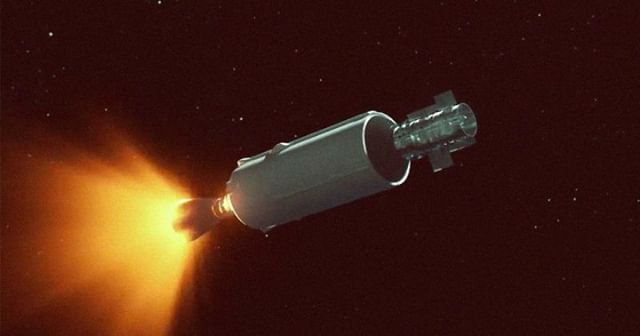Nanoracks Books SpaceX Rocket to Launch Space Habitat Demo in 2020 (Cubesats, Too!)

Nanoracks wants to expand from hosting experiments on board the International Space Station to running its own miniature stations built from used rockets, with a first launch scheduled for next year.
The company has arranged two launch eight cubesats and a space habitat construction experiment on a SpaceX Falcon 9 rocket in late 2020, according to a Nanoracks statement released Monday (Nov. 18). The launch, in partnership with Maxar, will be the company's first demonstration mission for its Outpost project, and will cut material that mimics a used second-stage rocket while in space. That's the first step in turning such equipment into a space station that Nanoracks can then commercialize, according to the company.
"Structural metal cutting has never been done in space, and SpaceX is honored to help deliver a demonstration of this capability to orbit," Gwynne Shotwell, president and chief operating officer of SpaceX, said in the statement. "It’s promising to see more companies like Nanoracks investing in new technologies to advance the exploration of the moon and, ultimately, Mars."
Related: The International Space Station: A Photo Tour
Last month, Nanoracks CEO Jeffrey Manber announced that the company intended to fly an Outpost demonstration mission like this in late 2020. With the Falcon 9 launch booked, the Outpost demonstration will join eight other Nanoracks-run satellites on the flight.
The demonstration is designed to slice the metal without producing any space junk. Such orbital debris is a real threat to existing and future satellites, which can be damaged or destroyed by collisions. Eventually, Nanoracks wants to turn used second-stage rockets into commercial space stations that could be headquarters for tourism, advertising, research and other opportunities.
Next year's test project relies on NASA funding. The agency wants to encourage private companies to develop an orbital economy. In June, NASA announced new opportunities for bringing commercial activities to the International Space Station, including hosting private astronauts for up to a month at a time. At the time, NASA also said that it was looking for ways to encourage companies to build independent space stations of their own.
Get the Space.com Newsletter
Breaking space news, the latest updates on rocket launches, skywatching events and more!
One project targeting that goal is already in space; the Bigelow Expandable Activity Module arrived at the space station in 2016 to test technology for such free-flying space stations.
- An Inflatable Space Room: The Bigelow Expandable Activity Module in Pictures
- Inflatable Space Stations of Bigelow Aerospace (Infographic)
- Gallery: Private Space Stations of the Future Imagined
Email Meghan Bartels at mbartels@space.com or follow her @meghanbartels. Follow us on Twitter @Spacedotcom and on Facebook.

Join our Space Forums to keep talking space on the latest missions, night sky and more! And if you have a news tip, correction or comment, let us know at: community@space.com.

Meghan is a senior writer at Space.com and has more than five years' experience as a science journalist based in New York City. She joined Space.com in July 2018, with previous writing published in outlets including Newsweek and Audubon. Meghan earned an MA in science journalism from New York University and a BA in classics from Georgetown University, and in her free time she enjoys reading and visiting museums. Follow her on Twitter at @meghanbartels.









